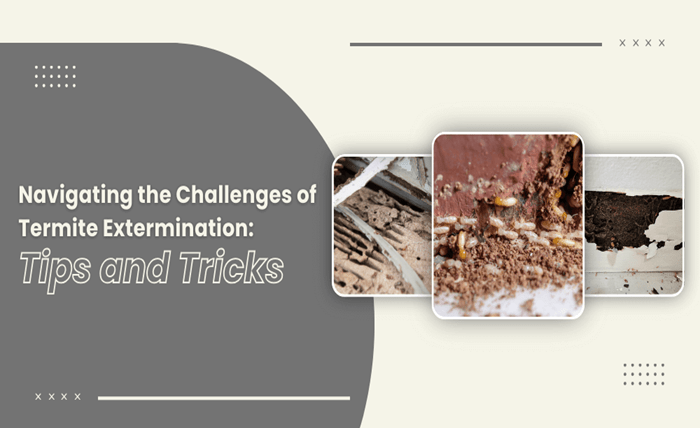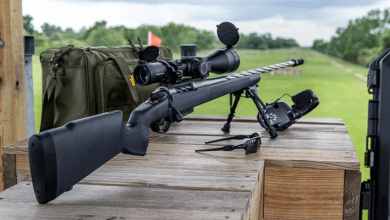
Did you find small mud tubes creeping along your basement walls and unsure what to do next? You’re likely facing a termite invasion, but the battle isn’t lost. Termites cause severe damage to homes and structures, creating an urgent need for effective extermination strategies. Understanding the magnitude of this threat is crucial for homeowners looking to protect their investments. When facing termite challenges, professional termite treatment services can provide the expertise and specialized equipment needed for effective elimination.
Furthermore, this guide offers practical tips and tricks, empowering homeowners to navigate the complexities of termite extermination. Using these strategies allows you to protect your property and maintain a termite-free environment by taking proactive steps and making informed decisions.
Identifying Termite Infestations Early
Early detection is crucial for managing termite problems efficiently. Homeowners should be on the lookout for the following signs:
- Wood damage: Look for hollow-sounding wood, blistering on painted surfaces, and unexplained cracks in walls.
- Mud tubes: These pencil-sized tunnels appear on exterior walls, foundations, or crawl spaces.
- Swarmers: Winged termites or discarded wings indicate an ongoing infestation.
Moreover, routine inspections are a preventive measure critical in controlling termite populations before they escalate. Homeowners should consider the following practices:
- Annual checks: Schedule professional inspections at least once a year.
- Regular monitoring: Monitor known termite-prone areas and act if you notice any changes.
Choosing the Right Extermination Method
Effective control hinges on selecting the correct termite extermination method. Homeowners should consider the following options based on their specific needs:
- Liquid Pesticides: Ideal for creating a barrier in the soil, preventing termites from entering the home. Most effective for subterranean termites.
- Baiting Systems: Suitable for intercepting and eliminating termites before they reach the structure. Effective for both detection and ongoing management.
- Fumigation: This method is most effective for severe and widespread infestations, particularly with drywood termites where total eradication is essential.
Choosing the appropriate termite treatment requires understanding the specific circumstances of the infestation. Homeowners should consider the following criteria:
- Type of termite: Different species may require specific treatment approaches.
- Extent of infestation: More severe infestations might need more aggressive methods like fumigation.
- Home’s specific needs: Consider the structure’s layout and the presence of sensitive areas that might affect treatment choice.
Integrating Chemical and Natural Solutions
Combining chemical treatments with natural prevention strategies can significantly improve the effectiveness of termite extermination in Plain City, OH. Homeowners should consider the following methods:
- Chemical barriers: These deter termites from entering and infesting structures.
- Natural deterrents: Complementing chemicals with natural methods like landscaping to discourage termites.
Employing natural strategies can prevent termite infestations before they start. Homeowners can implement the following practical techniques:
- Moisture control: Keep the foundation dry to discourage termite activity.
- Proper landscaping: Maintain distance between wood materials and the ground.
- Termite-resistant materials: Use wood and other materials that are less attractive to termites.
Safety Precautions During Extermination
Specific safety measures are crucial when using chemical methods for termite extermination to protect your household. Homeowners need to implement the following:
- Appropriate ventilation: Ensure the area is well-ventilated to prevent inhalation of chemical fumes.
- Controlled access: Avoid exposure by keeping family members and pets away from treated areas.
Following safety guidelines is vital during the termite extermination process. Homeowners should ensure compliance with the following steps:
- Follow label instructions: Read and adhere strictly to the product’s guidelines to maximize safety and effectiveness.
- Use protective equipment: Always wear recommended personal protective equipment during application.
- Secure pets and children: Ensure that pets and children are kept away from treated areas until entirely safe.
Post-Extermination Monitoring and Maintenance
Ongoing monitoring and maintenance are vital for ensuring the success of termite extermination. Keep an eye out for these signs to determine if additional treatments are needed:
- Reappearance of mud tubes: These may indicate a resurgence of activity.
- Fresh wood damage: New damage can suggest that additional treatments are necessary.
Regular maintenance checks and updates to preventive strategies are vital for safeguarding homes against future infestations. Ensure you take the following steps:
- Periodic inspections: Regular inspections help detect any new termite presence early.
- Revise prevention tactics: Update and improve strategies based on recent findings.
- Environmental controls: Manage moisture and wood contact around the property to minimize termite attraction.
Extermination Excellence Achieved
In conclusion, navigating the challenges of termite extermination requires a proactive and informed approach. Key strategies are essential, such as early detection, selecting the proper treatment method, and integrating chemical and natural solutions.
Furthermore, homeowners are encouraged to consult with professionals or engage in thorough research and preparation if they choose to handle termite extermination. Effective termite management protects and enhances your property’s long-term integrity and value, securing your investment for the future.



